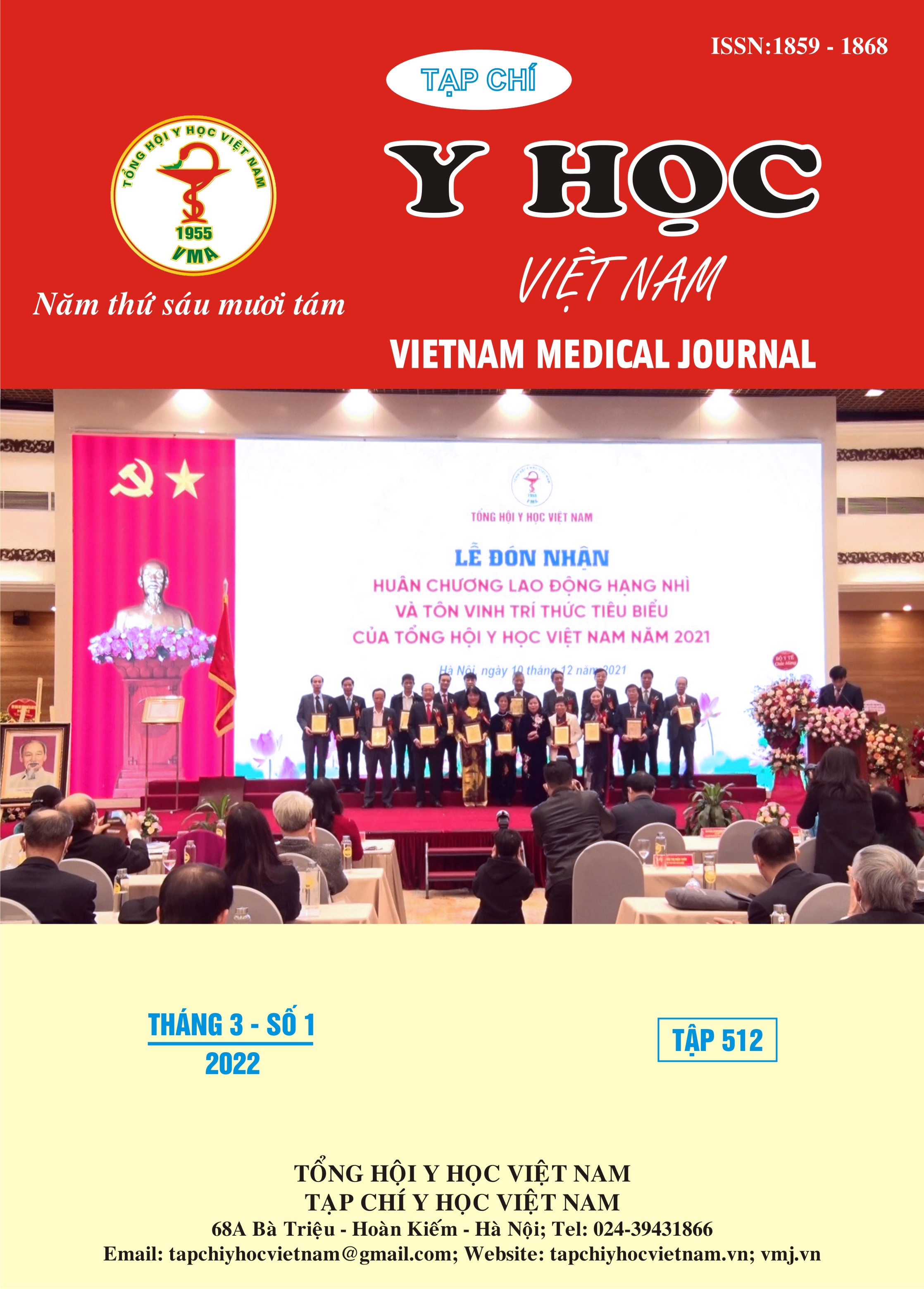THE STATUS OF SCHIZOAFFECTIVE DISORDER, DEPRESSIVE TYPE
Main Article Content
Abstract
Our study aimed to describe the status of schizoaffective disorder, depressive type in patients treated in Institute of Mental Health - Bach Mai hospital. This is a cross-sectional descriptive study, including 40 patients diagnosed with schizoaffective disorder, depressive type according to ICD-10 criteria (F25.2). Results: the mean age of patients was 30.3±8.2 years. There were more women than men, and the female/male ratio was about 1.4/1. The majority of patients were married (55.0%), had a high level of education at university - college (65.0%) and lived in rural areas (72.5%). Up to 32.5% were misdiagnosed as acute psychotic disorder (17.5%) or depressive disorder (15%). Approximately 20% of patients with schizoaffective disorder had a family members who suffering a psychotic disorder, and up to 50% of cases began after a traumatic event.
Article Details
Keywords
depression, psychosis, schizoaffective depression
References
2. Azorin JM, Kaladjian A, Fakra E. [Current issues on schizoaffective disorder]. L’Encephale. 2005;31(3):359-365. doi:10.1016/s0013-7006(05) 82401-7
3. Association AP. Diagnostic and Statistical Manual of Mental Disorders, 5th Edition: DSM-5. 5th edition. American Psychiatric Publishing; 2013.
4. Benabarre A, Vieta E, Colom F, Martínez-Arán A, Reinares M, Gastó C. Bipolar disorder, schizoaffective disorder and schizophrenia: epidemiologic, clinical and prognostic differences. Eur Psychiatry J Assoc Eur Psychiatr. 2001; 16(3): 167-172. doi:10.1016/s0924-9338(01)00559-4
5. Ndetei DM, Khasakhala L, Meneghini L, Aillon JL. The relationship between schizoaffective, schizophrenic and mood disorders in patients admitted at Mathari Psychiatric Hospital, Nairobi, Kenya. Afr J Psychiatry. 2013;16(2):110-117. doi:10.4314/ajpsy.v16i2.14
6. Pinna F, Sanna L, Perra V, et al. Long-term outcome of schizoaffective disorder. Are there any differences with respect to schizophrenia? Riv Psichiatr. 2014;49(1):41-49. doi: 10.1708/1407.15624
7. DeRosse P, Burdick KE, Lencz T, Siris SG, Malhotra AK. Empirical Support for DSM-IV Schizoaffective Disorder: Clinical and Cognitive Validators from a Large Patient Sample. PLoS ONE. 2013;8(5):e63734. doi:10.1371/journal.pone.0063734
8. Santelmann H, Franklin J, Bußhoff J, Baethge C. Diagnostic shift in patients diagnosed with schizoaffective disorder: a systematic review and meta-analysis of rediagnosis studies. Bipolar Disord. 2016;18(3):233-246. doi:10.1111/ bdi.12388


